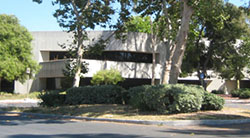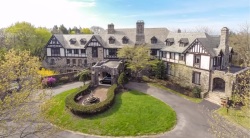
With the definition for gifted constantly changing and expanding, it can be a struggle for parents and educators to feel confident that they are meeting the needs of their exceptional charges. Even the process of identifying the gifted has undergone a monumental shift away from single-administered standardized test scores and towards months or years of group monitoring and task observation. The question of properly identifying the gifted has become highly political in some schools and districts, and many administrators have become wary of the process.
And, once a child is paired with a gifted program, how best to understand and reach him or her? What if he or she is doubly exceptional and suffers a learning disability in addition to gifted characteristics? The implementation of such programs is another challenge: How best to allocate resources? Are all students, no matter the style of their gift, being enriched and encouraged? Finding qualified and passionate teachers to reach each student is a concern, as is fruitful communication with parents and school psychologists. It can seem exhausting to keep all these plates in the air while also seeing to the needs of average as well as students who are facing learning differences, but each and every child deserves an education which shapes gifts while shoring up weaknesses.
Identifying Gifted Students & Children
Ideally, a school or even an entire district will have in place definitive guidelines and action items for identifying gifted children. These should be a mix of approaches to allow for learning differences and variations in giftedness; for example, some children are exceptional leaders or have outstanding physical abilities—these cannot be measured on standardized tests.
Forming a plan to identify the gifted might run into a political firefight. Some activists demand special provisions for children who are minorities, and wish to increase outreach or limit participation of majorities, but parents and taxpayers may advocate for purely merit-based placement.
The Role of Standardized Tests
While excellent classroom performance and high standardized test scores can be an indicator of giftedness, it is not only one. Some students who knock out consistently high grades may be intelligent with good preparation skills and a strong work ethic, but these qualities do not necessarily cross into giftedness. Children can have an above-average IQ and operate at high level within the structure of a traditional school and still founder when presented with tasks where the truly gifted shine. While these students are “made for school” and will likely perform well all their student days and probably also become excellent employees, they may not rise to the level of gifted. In fact, many exceptional students are frustrated by the pace, subject matter, and expectations of formal education.
Standardized tests should be used, but administered by a qualified professional at various points in the school year as well as in a child’s development. Sometimes children might perform poorly on a single test due to tiredness, anxiety, or learning disabilities. However, this should by no means be the only factor. Giftedness is multifaceted.
It is best for teachers as well as staff members such as guidance counselors to receive at least some training in identifying the gifted. They by no means need to receive Master’s degree-level instruction, but enough so that they understand the depth and breadth of giftedness and develop the ability to flag students for further observation.Such signals can include unusual questions from the student, a sophisticated vocabulary, and excitement for learning.
Potentially gifted students should be observed both in and out of the classroom, in groups and working independently. As giftedness can manifest in a variety of ways, giving students multiple and diverse opportunities to express them is best.
Left on Their Own
Historically, gifted students have been left to their own devices in the classroom, either corralled as “teacher’s helper,” skipped a grade, shooed into advanced placement courses, or shunted off to extracurricular activities. While forms of these solutions can all help in the development of gifted children— exceptional students tend to enjoy being treated by adults as colleagues instead of children, but their time in the classroom should hardly be wasted correcting spelling tests, if only to avoid running foul of child labor laws—they are not gifted education.
While gifted students certainly don’t have to spend the entirety of their time with other exceptional students, this is where they tend to flourish. An outdated mode of thought encouraged teachers and administrators to keep gifted students with their average peers so as to “inspire” and “motivate” the others. What this resulted in, unfortunately, was boredom on the part of the exceptional student and a drop in self-esteem by his or her average classmates. A well-run gifted program can elevate the learning environment of a school and community as a whole since it meets the needs of certain students, but on a micro-classroom level, it helps neither the gifted nor the average or struggling.
Mixing with Other Students
Since many gifted children are bullied because of their extensive vocabulary, inventive forms of thought, tendency to become frustrated with average peers, and preference for adult company, they benefit from knowing that other students, although they may not have the same gifts, experience similar thoughts, emotions, and sensitivities.
True gifted education approaches the student holistically, allowing him or her to challenge his or her gifts while also taking into account asynchronous development, possible disabilities, and even areas in which their understanding and learning operates on an average level. It combines group as well as individual learning, open-ended tasks, and allows students the freedom to exercise their ideas—to try and to fail, to attempt and correct course.
Teaching & Collaborating with Parents
Effective gifted education requires an understanding of the student’s strengths and weaknesses, as well as a fair measure of parental participation. Parents and guardians can act as academic coaches as well as record examples of their children operating at unusually high levels. They can help clue educators in on the child’s emotional development and work preferences.






